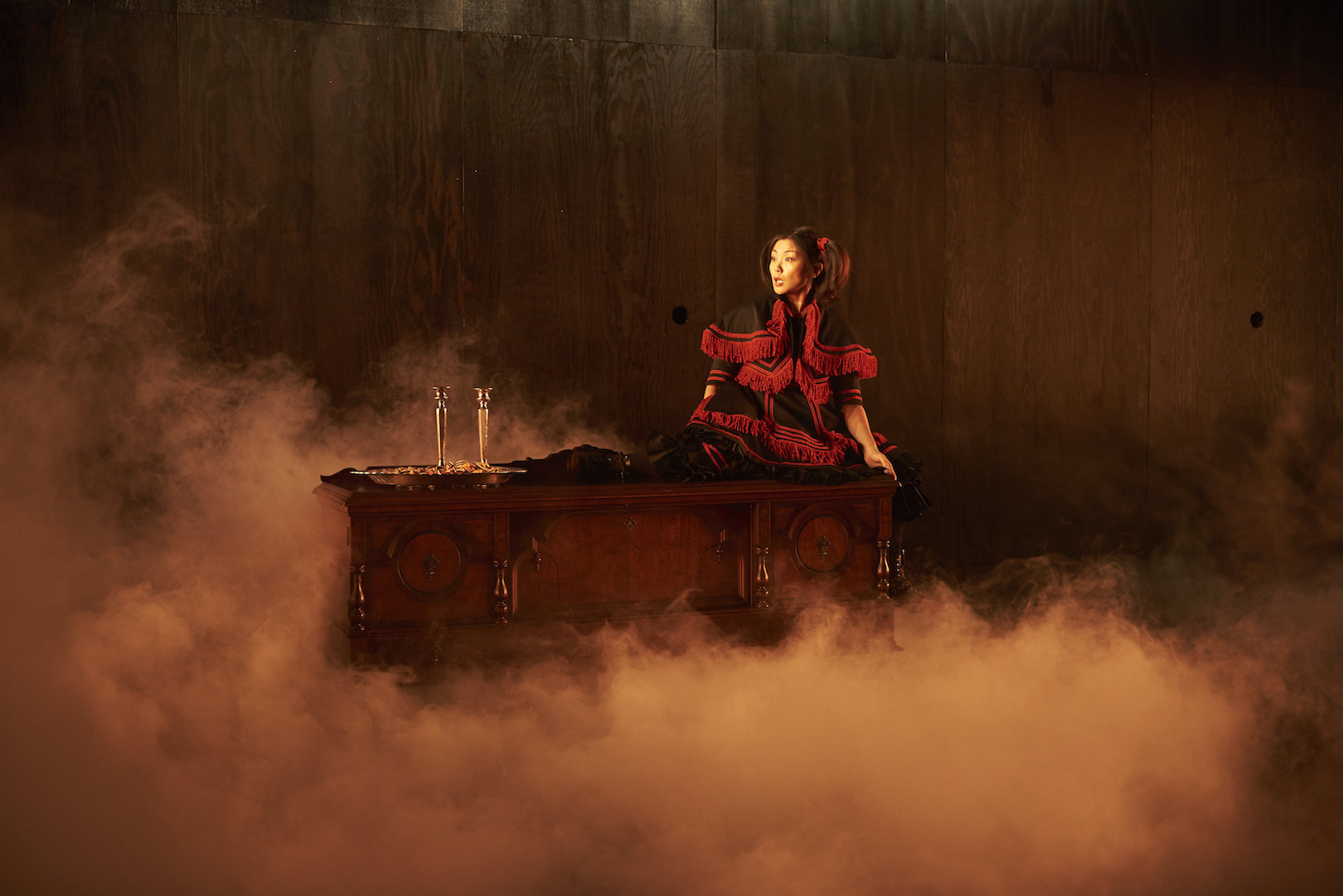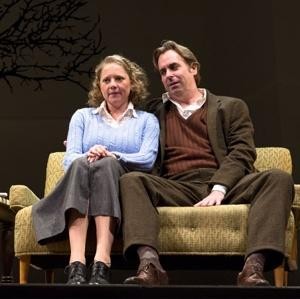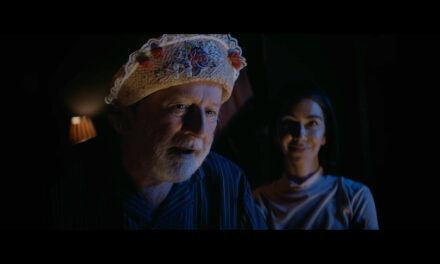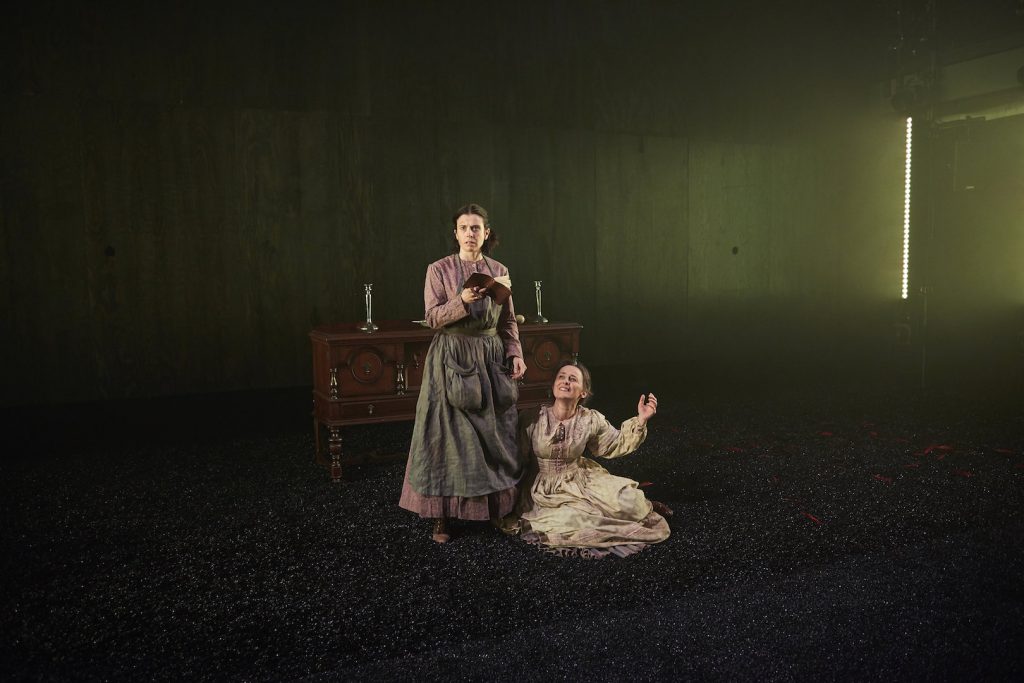

Long, quiet, moody stretches are punctured by pockets of laughter in the Playwrights Realm’s production of The Moors, emerging playwright Jen Silverman’s surrealistic, feminist approach to mid-19th-century, Brontë-esque life on the bleak English moors. An undertone of desire and the threat of violence seeps into the isolated life of the characters like the fog enveloping the old manor house in which the action occurs.
This promising but rarely compelling, dream-like parody of early Victorian literature imagines the dreary existence of two spinster sisters, neither of them called Ann, Emily, or Charlotte. The older one is the haughty, commanding Agatha (Linda Powell), her hairstyle and black ensemble suggesting both mourning and dominatrix-like menace.
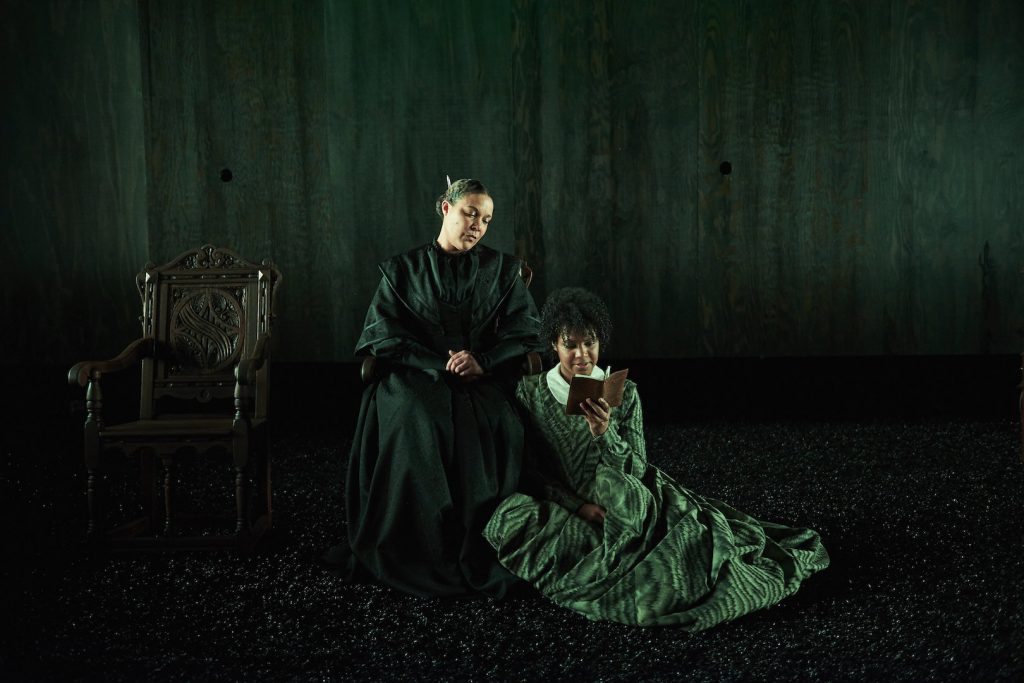

Agatha’s younger sister is the unstable dreamer Huldey (Birgit Huppuch), who keeps a banal diary although she has literary aspirations. The maids are the snide Marjory and Mallory (Hannah Cabell), actually a single person; in one guise, she’s pregnant and in the other suffering (with a hacking cough) from typhus, with her household duties depending on who she is at any particular moment. And things get weirder.
The family’s new governess, Emilie (not Emily) Vandergaard (Chasten Harmon), has a name reminiscent of a Brontë, while an actual Brontë is embodied by Branwell, the historical sisters’ dissolute brother, here transmuted into Agatha and Huldey’s equally troubled but never seen sibling. He’s confined to a bricked-up attic room where he’s kept barely alive for some dire purpose.
Emilie is lured to the moors by the hint of romance in Branwell’s beautifully written letters, actually authored by Agatha, one of the mind games Silverman plays as she works out her emphasis on female agency. Agatha, who will soon initiate a lesbian relationship with Emilie, even cautions the governess in one of the play’s clearest thematic statements:
“I think, Miss Vandergaard, you know very little about women and what they are capable of. That is not your fault. You have been handed limitations, which you accepted. Perhaps accepting them was your fault. Either way, in your time here on the moors, perhaps you will become more knowledgeable.”
Thus all Brontë references—there are others—are intended to be allusive, and correspond in only the most fanciful ways to historical facts.
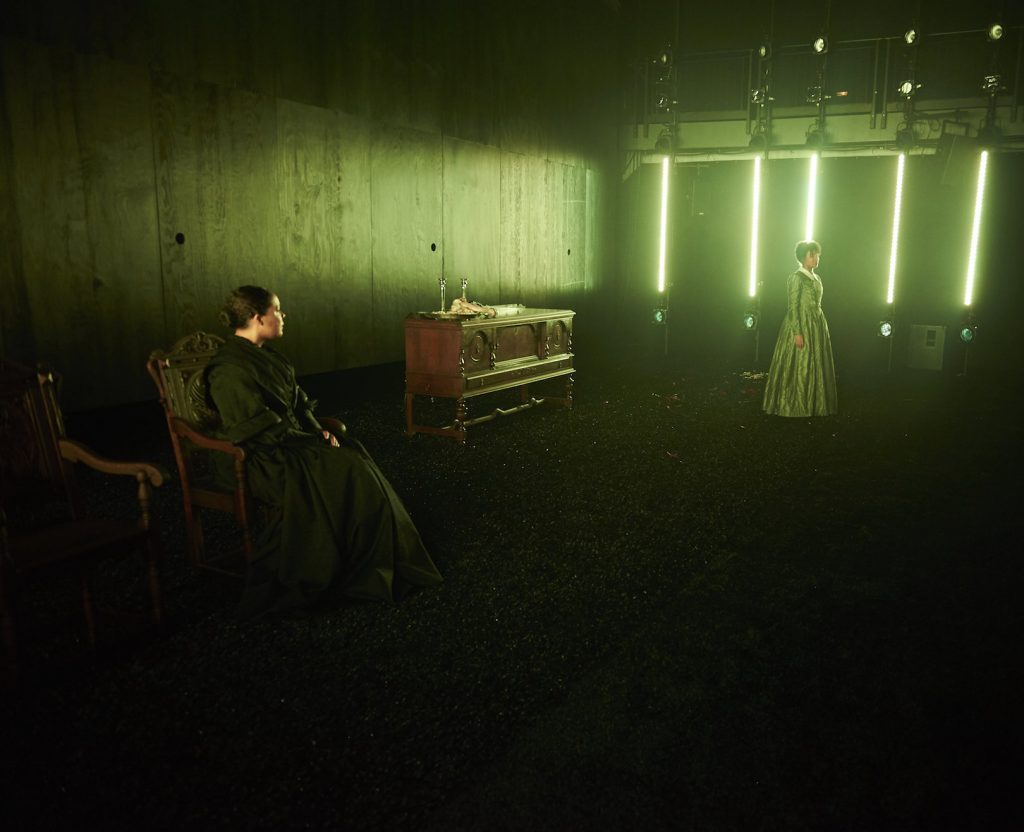

The oddest participants are the unnamed mastiff (Andrew Garman), dressed like a country squire, with barely any doggy features, and a similarly human moor-hen (Teresa Avia Lim), a bird whose species keeps falling out of the local skies to serve as a dinnertime staple. She becomes romantically involved with the depressed canine, whose longing for happiness includes a quest for God. A good third of the play concerns their affair, carried out in perfectly natural English.
Given the play’s fondness for metaphorical hints, the moors themselves serve as a character, dangerous, savage, and threatening but also a source of strength. When the action shifts to them, billowing pillows of fog fill the stage, much of it pouring out of four holes drilled in the bland, wooden, upstage wall serving as the neutral background. (The few pieces of furniture remain in place as part of a running joke about how the rooms all perfectly resemble one another.)
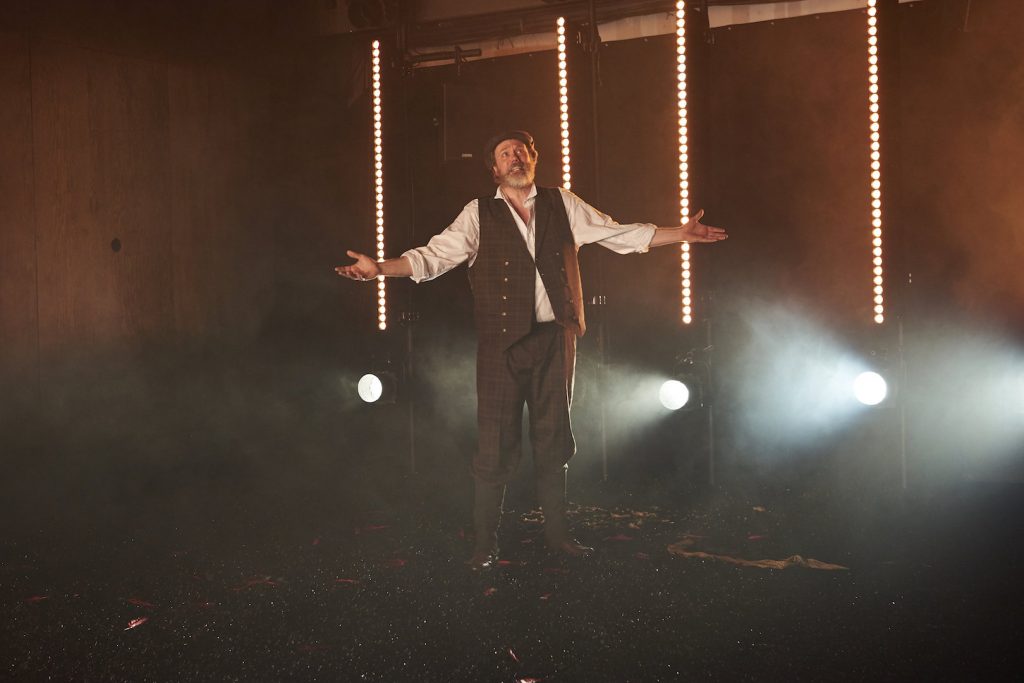

According to photos, the play’s premiere at the Yale Repertory Theatre, under Jackson Gay’s direction, had the kind of wainscoted wall—with paintings on it and a huge, wooden door—you might see at an actual manor house; Dane Laffey’s duller, less realistic approach is no improvement. Jen Schriever’s versatile lighting and Anita Yavich’s period costumes, however, do much to provide visual interest.
Silverman’s language, sometimes reaching for the poetic, is contemporary vernacular, spoken with American accents, emphasizing the play’s present-day relevance. A heightened style infuses the acting, and, under Michael Donohue’s direction, the actors occasionally seem to be commenting on their characters. At the bloody conclusion, Huldey emphasizes the piece’s postmodernist attitude by bringing on a standing mic and blasting out a rock song as pink lighting pierces a fog-filled stage.
Some will appreciate Silverman’s take on depression, loneliness, longing, literary aspiration, and female bonding, not to mention sibling rivalry and murder on the Victorian moors. On the other hand, despite its excellent ensemble—Huppuch is especially noteworthy—others will, like me, find it an overlong, cerebral exercise lacking in emotional warmth and consistent interest. I’d suggest that less of The Moors—perhaps 20 minutes less—would be a vast improvement.
The Moors. Through March 25 at The Duke on 42nd Street (22nd West 42nd Street, between Seventh and Eighth Avenues). www.dukeon42.org
Photos: Joe Chea


